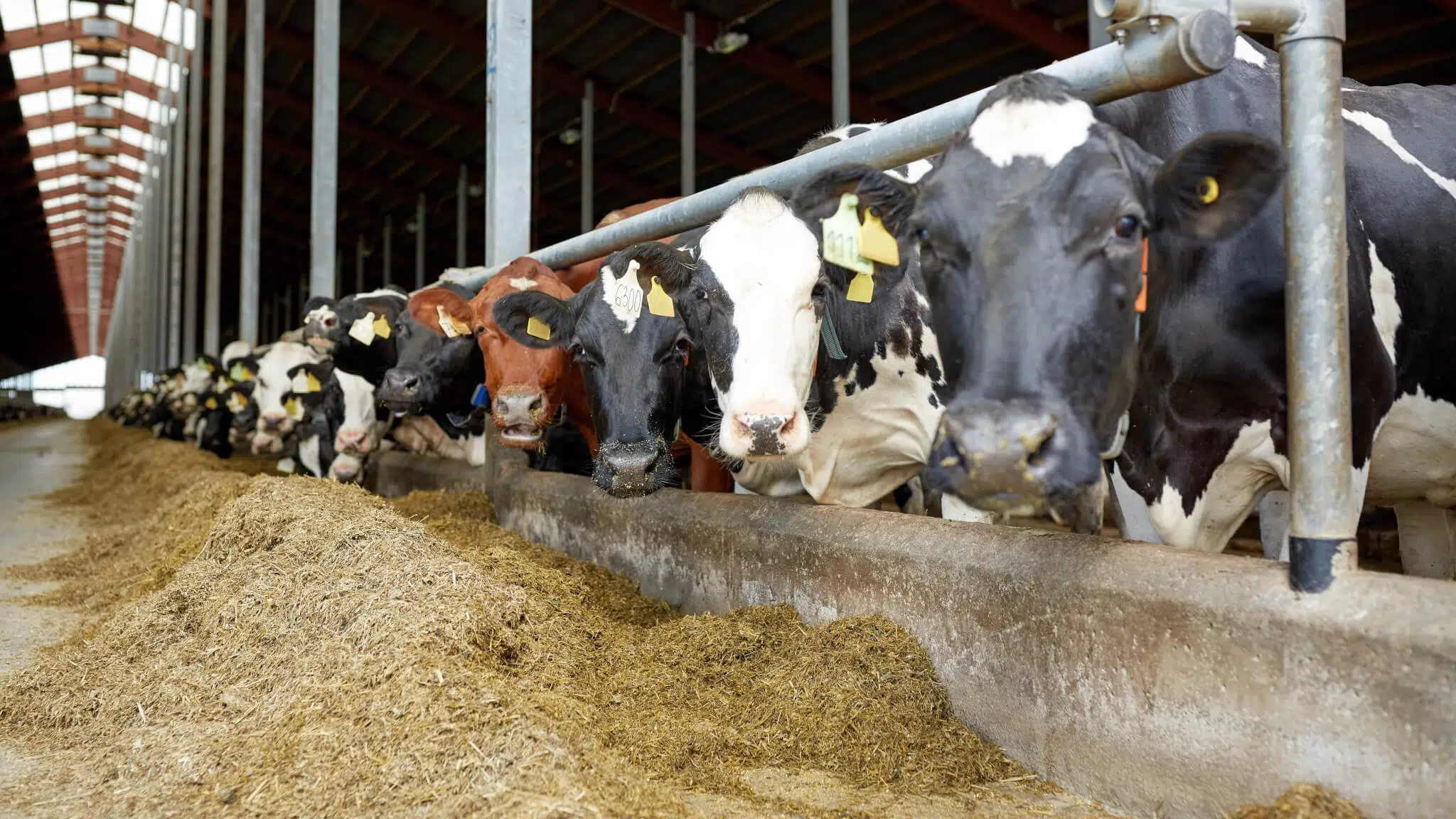Comfortable cows produce more milk, but cows can only be comfortable if they are comfortable with their diet – an optimally formulated, well-mixed, properly delivered ration. Proper wagon mixing and maintenance can ensure that you are getting a consistent feed mix and maximising the effects of your dairy cattle nutrition programme. Learn how to get the best results from your mixing wagon with these five-by-five-by-five top tips.
“Effective wagon mixing and maintenance strives for accurate blending of the ration to match what your operation’s nutritionist has formulated”
Trace minerals and additives
Adding performance trace minerals and other additives to your dairy cattle nutrition programme is an important step in boosting animal performance and productivity, but it is equally important to ensure that all of the feed components are consistently being mixed into the feed ration. Most large, modern dairy operations use vertical or horizontal mixer wagons. Vertical mixer wagons are the most popular, especially for those dairy operations that are feeding dry hay that needs to be processed.
Effective wagon mixing strives for accurate blending of the ration to match what your operation’s nutritionist has formulated. If you’re not getting a consistent mix of the feed, you will see sorting in the feed bunk. This can lead to the cattle consuming less fibre and more concentrates than expected thereby lowering the rumen pH. Furthermore, all animals may not be getting adequate levels of trace nutrients due to inconsistent mixing.
All mixer wagons work as intended when they are new. It is important to remember that the internal components will wear out and require periodic servicing or replacement. The bottom line is this: after six months, don’t expect the wagon to perform the way it did the day it arrived.

Mixer wagon analysis
1. Look inside the empty mixer
Check for feed left inside after the last feeding, count the knives and look at their condition, observe the kicker plate and notice any excessive wear, and check placement of baffles.
2. Look inside the mixer when mixing
Safely climb on a platform and observe when the mixer is one-third full, half full, and full. Look for mixing action above the auger, at the tub divider, and around the discharge door, and notice the location of any dead feed areas.
3. Watch the mixer during unloading
Do a ride-along or use a GoPro camera to determine whether feed inside the mixer is unloading evenly. Even with a front discharge door, the feed level in each tub should be close to equal.
4. Monitor loading technique
Keep the mixer turning while loading the ration. When loading ingredients with small inclusion rates, or a small load, it’s best to load down the side wall of the wagon instead of dumping the ingredient directly over the augers. Use a spreader bar for loading liquid ingredients. Load ingredients on a level surface and allow at least five minutes of mixing time after adding the last ingredient.
5. Unloading
Correctly distribute feed along the bunk (close enough to avoid cows reaching) and use correct tractor revolutions per minute (RPM), speed, and door opening to provide even flow of feed and level feed-out.
Five points to remember to get the best mix
- Regular maintenance.
- Mix on a level surface.
- Keep the mixer wagon running while
adding the feed components. - Smaller loads require special attention.
- Remember the proper mixing order*.
*First, add feed components that will require particle size reduction, such as dry hay or lucerne, to break down the forage length. If the total mixed ration (TMR) includes high-moisture grass silage (>70%), place this forage in the mixer first, especially if it’s in bale form. Allow time for this ingredient to break apart and level out in the mixer before adding other feed components. Add concentrates and minerals second. It’s important to add these down the inside wall of a vertical mixer wagon to ensure they do not stick to the top of the screws. This is also a good time to add molasses to the mixing wagon to give it additional time to consistently mix with the other feed components. Finally, add any silage that will make up the final part of the mixing order, followed by liquids, including whey and water.
Five signs of an inconsistent mix
- Dead spots in the mixer.
- Uneven feed levels from the front to the back of the mixer.
- If feed in the feed bunk looks wavy, this may indicate that the augers are not keeping up with each other to push the feed out in a uniform manner.
- Unmixed or inconsistently mixed feed.
- Worn kicker plates will also affect the consistency of the TMR.
Conclusion
Proper observation of wagon mixing and maintenance enable us to catch problems before they affect the cows, keeping our cows comfortable and optimally productive.
Alex Jenkins is a technical specialist in the ruminant team at Chemuniqué and holds a master's degree in animal science from the University of KwaZulu-Natal.










